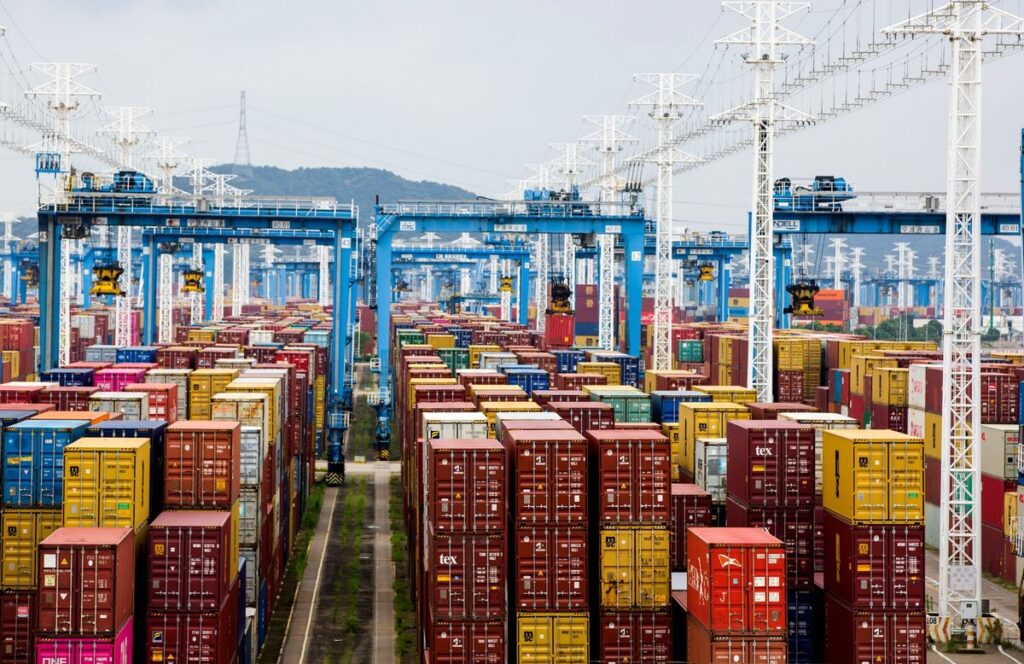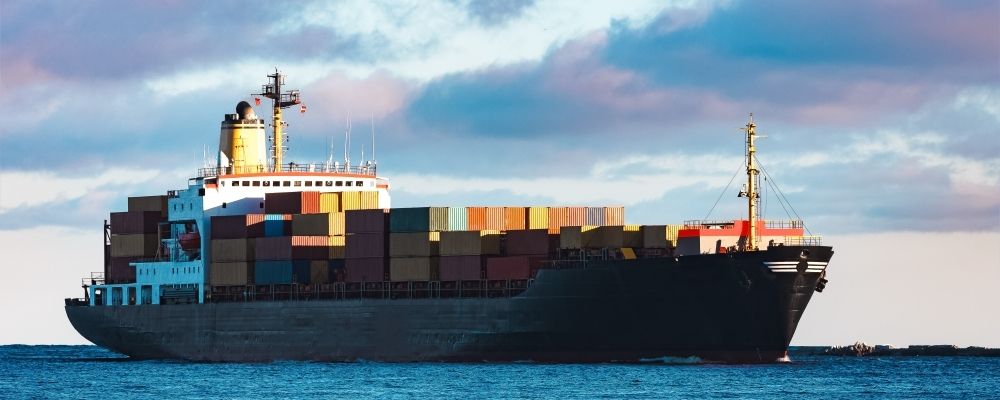In recent years, the demand for artificial plants in the United States has been steadily rising. From enhancing indoor spaces to providing low-maintenance greenery, artificial plants have become a popular choice for homeowners, businesses, and interior designers alike. With China being a major hub for manufacturing artificial plants, understanding the country’s popular ports for US importers is crucial for those in the industry.
– 5 Key Ports of China:
China boasts an extensive network of ports, each offering unique advantages for importing artificial plants into the US market. Let’s delve into some of the key ports that stand out for their efficiency, infrastructure, and connectivity.
1. Shanghai Port:
As one of the world’s busiest container ports, Shanghai Port holds a prominent position in China’s maritime trade. Its strategic location at the mouth of the Yangtze River makes it an ideal gateway for goods destined for the US. Shanghai Port’s state-of-the-art facilities, advanced logistics capabilities, and efficient customs clearance procedures contribute to its popularity among exporters and importers alike.

2. Shenzhen Port:
Located in the Pearl River Delta region, Shenzhen Port is renowned for its proximity to major manufacturing hubs in southern China. Its modern terminals and extensive transportation links ensure smooth cargo handling and timely deliveries. Shenzhen Port offers convenient access to a wide range of suppliers and manufacturers, making it a preferred choice for sourcing quality products.
3. Ningbo-Zhoushan Port:
Ningbo-Zhoushan Port, situated in Zhejiang Province, is another key player in China’s maritime industry. It ranks among the world’s top container ports and serves as a vital link in the global supply chain. With its deep-water berths, advanced equipment, and efficient operations, Ningbo-Zhoushan Port facilitates the seamless transit of artificial plants bound for US markets. Its proximity to major production centers in eastern China adds to its appeal for exporters.

4. Guangzhou Port:
As the largest port in southern China, Guangzhou Port plays a pivotal role in facilitating trade between China and the rest of the world. Situated along the Pearl River, it serves as a crucial transportation hub for goods moving in and out of the Guangdong Province. You can benefit from Guangzhou Port’s extensive shipping routes, competitive pricing, and comprehensive logistics services, making it a preferred choice for sourcing products from the region.
5. Qingdao Port:
Located on the Yellow Sea coast, Qingdao Port is renowned for its efficiency, reliability, and connectivity. It serves as a vital gateway for trade between China, Northeast Asia, and beyond. Qingdao Port’s modern infrastructure, streamlined processes, and strategic location make it an attractive option for you looking to diversify your supply chain and access new markets.
– Key Factors in Port Selection:
When navigating the complex landscape of port selection in China, you need to carefully consider a variety of factors to optimize your supply chain and ensure seamless operations. Among these considerations, seven key factors stand out as crucial determinants in port selection:
1. Proximity to Supplier:
The proximity of the chosen port to the supplier’s location is a critical factor that directly impacts the efficiency and cost-effectiveness of the import process. By selecting a port that is in close proximity to the supplier’s manufacturing facility, you can significantly reduce transportation costs and transit times.

This strategic decision minimizes the need for extensive inland transportation, such as trucking or rail transport, thereby streamlining the logistics process and optimizing supply chain operations. Importers benefit from shorter lead times, increased flexibility in managing inventory levels, and enhanced responsiveness to market demands. Moreover, proximity to the supplier fosters stronger relationships and communication channels, facilitating collaboration and problem-solving in real-time.
2. Shipping Routes and Transit Time:
Assessing shipping routes and transit times is essential for ensuring the timely and efficient delivery of artificial plants to US destinations. You can evaluate factors such as the availability of direct shipping routes, transit times, and potential delays caused by congestion, weather conditions, or geopolitical factors.

By choosing ports with efficient shipping routes and shorter transit times, you can minimize the risk of shipment delays and maintain a reliable supply chain. Additionally, evaluating the port’s connectivity to major transportation networks, including railways, highways, and intermodal facilities, enhances logistical efficiency and facilitates seamless cargo movement from port to final destination.
3. Port Facilities and Handling Capabilities:
The quality and capabilities of port facilities directly impact the efficiency, reliability, and safety of cargo operations. You need to ensure that the chosen port possesses the necessary infrastructure, equipment, and resources to accommodate the specific requirements of artificial plant shipments.
This includes assessing the port’s handling capabilities for oversized or delicate cargo, as well as its capacity to handle large volumes, especially during peak seasons or promotional periods. Moreover, evaluating the port’s storage facilities, customs clearance procedures, and security measures is essential for mitigating risks and ensuring smooth cargo handling processes. Ports equipped with advanced technologies, automated systems, and dedicated personnel enhance operational efficiency and minimize potential disruptions.
4. Costs:
Comparing the costs associated with different ports is crucial for importers seeking to optimize expenses and maximize profitability. You need to carefully analyze various cost components, including handling fees, terminal charges, berth fees, customs duties, and transportation costs, to identify the most cost-effective option. Moreover, considering tariffs, trade agreements, and potential currency fluctuations provides insights into additional expenses or savings associated with specific ports. By conducting a comprehensive cost analysis, importers can make informed decisions that balance cost considerations with quality, efficiency, and reliability.
5. Reliability and Reputation:
The reliability and reputation of a port are key indicators of its performance, professionalism, and suitability for import operations. You can prioritize ports with a proven track record of reliability, punctuality, and customer satisfaction in handling imports. Ports with excellent reputations often demonstrate superior infrastructure, advanced technology, and well-trained personnel, which contribute to smoother operations and fewer disruptions.

By choosing a reputable port, you can mitigate risks, minimize delays, and maintain consistency in their supply chain operations. Moreover, ports with strong reputations foster trust and confidence among stakeholders, enhancing long-term partnerships and business relationships.
6. Leveraging Logistics Partners:
Collaborating with experienced logistics partners who have expertise in navigating the intricacies of the chosen port further enhances the efficiency and effectiveness of the import process. Logistics providers familiar with the selected port offer valuable insights, guidance, and support to importers, facilitating seamless coordination and communication throughout the supply chain.
These partners leverage their knowledge of local regulations, customs procedures, and industry best practices to optimize logistics operations and address any challenges that may arise. By leveraging logistics partners, you streamline the import process, reduce administrative burdens, and enhance overall operational performance.
7. Customs and Compliance:
Ensuring compliance with customs regulations and streamlining the customs clearance process is imperative for avoiding delays, penalties, and disruptions in the import process. Importers should prioritize ports with efficient customs clearance procedures, transparent regulatory frameworks, and robust compliance measures for importing artificial plants. Ports equipped with advanced customs technologies, automated clearance systems, and dedicated customs support services expedite the clearance process and minimize bureaucratic hurdles.
Additionally, staying informed about regulatory changes, import restrictions, and documentation requirements enables importers to maintain compliance and facilitate smooth import operations. By prioritizing customs and compliance considerations, you can mitigate risks, enhance operational efficiency, and ensure the timely delivery of artificial plants to US destinations.
In conclusion, China offers a plethora of options for US importers seeking to source artificial plants. Whether it’s the bustling ports of Shanghai and Shenzhen or the strategic gateways of Ningbo-Zhoushan, Guangzhou, and Qingdao, each port brings its own advantages to the table. By understanding the strengths and capabilities of these ports, you can make informed decisions to optimize their supply chain and meet the growing demand for artificial plants in the market.


